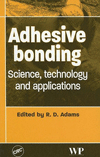Shhh.... It's a Secret
Manufacturers should know the limitations of trade secret law when protecting adhesive and sealant formulae.

Imagine this scenario: The lead chemist of Sealco, a manufacturer of compounded adhesives and sealants, quits. The chemist then joins another adhesive and sealant manufacturer, Tackco. Shortly thereafter, Tackco begins producing a line of adhesives and sealants that are the equivalent to a product line made by Sealco. Moreover, the new product line is very similar to products that were developed by the former employee during his tenure at Sealco. However, Tackco is not selling its new product line into the same applications or to the same customers as Sealco’s.
Sealco lawfully obtains and de-formulates Tacko’s new line and determines that the new products are chemical equivalents to their products. The question is: Under the law of trade secrets, can Sealco prevent Tackco from manufacturing its new product line? Probably not. Even a signed non-compete agreement will be of little help.
It is useful to examine the limitations of the law of trade secrets in protecting formulated products from unfair competition. A large portion of the business of the adhesives and sealants industry is the development, manufacture and sale of formulated products. Unlike the pharmaceutical industry, which extensively uses patent law to protect its products, most adhesive and sealant manufacturers use the law of trade secret to protect their products. Contracts not to compete are also commonly used. It is important for adhesive and sealant manufacturers to understand the limitations of these laws.
In the previously mentioned case, Sealco will have to prove that it had a protectable interest in the formulae that made up the product line and that the provisions of the contract were reasonable in protecting that interest. Formulae are a protectable interest. An employee’s knowledge to create those formulae, however, is not. Sealco would have to prove that there was no way that its former employee could have developed the new line of products without using its protectable interest. This would be a very difficult task in an industry rife with competitive raw materials that skilled employees can easily use to create an offset.
Absent misappropriation, in this case, the law of trade secret does not provide much relief. A company’s formulae are its property. Under the legal doctrine of Hired to Invent, any formula created by an employee whose job is to invent new formulae is the property of the company. An equivalent formula that is made up of raw materials that are mere competitive offsets to the original formula is not. The law of trade secret does not provide any relief for two reasons. First, the doctrines inherent in the law limit its ability to provide relief. Second, the legal doctrine of preemption prevents trade secret law from providing relief for equivalent formulae.

What if reverse engineering did not occur with these formulae? Rather, the formulae are derived from the past knowledge and experience of Sealco’s former employee, and the products are made of equivalent raw materials provided by competitors to their current raw material suppliers. Does the law of trade secret provide any protection in this case? Again, no.
The law of trade secrets cannot provide protection against equivalent or knock-off formulae. Only a valid patent would provide relief against equivalent formulae. A patent prevents the use, manufacture, sale or importation of the patented invention. It also provides protection against an equivalent product under the Doctrine of Equivalents. Trade secret law cannot be expanded to include equivalent formulae because it is preempted by patent law.
If trade secret law provided protection for equivalents, it would be an additional restraint of trade beyond patent law and would create a disincentive to invent. In addition, equivalent formulae would be removed from public domain. Thus, any attempt to provide relief under the law of trade secret would be preempted by the Doctrine of Equivalents under patent law.
Maintaining a trade secret is considered suppression and concealment of an invention. The U.S. Court has reasoned that Congress’ intent is to promote the disclosure of inventions to the public. Keeping an invention secret goes against public policy, so the court allows the second inventor a patent. In doing so, the court is encouraging other inventors to obtain a patent as well-but the trade secret owner will still lose their trade secret.
Once the patent is granted, the invention, by definition, is in the public domain-the trade secret is lost. Once an invention is in the public domain, it is no longer a protectable interest. In this case, even if a formula was sufficiently unique to be a protectable interest, a contract not to compete would no longer have an effect on that particular formula.
For additional information, contact the author at paul@dalleylaw.com.

Imagine this scenario: The lead chemist of Sealco, a manufacturer of compounded adhesives and sealants, quits. The chemist then joins another adhesive and sealant manufacturer, Tackco. Shortly thereafter, Tackco begins producing a line of adhesives and sealants that are the equivalent to a product line made by Sealco. Moreover, the new product line is very similar to products that were developed by the former employee during his tenure at Sealco. However, Tackco is not selling its new product line into the same applications or to the same customers as Sealco’s.
Sealco lawfully obtains and de-formulates Tacko’s new line and determines that the new products are chemical equivalents to their products. The question is: Under the law of trade secrets, can Sealco prevent Tackco from manufacturing its new product line? Probably not. Even a signed non-compete agreement will be of little help.
It is useful to examine the limitations of the law of trade secrets in protecting formulated products from unfair competition. A large portion of the business of the adhesives and sealants industry is the development, manufacture and sale of formulated products. Unlike the pharmaceutical industry, which extensively uses patent law to protect its products, most adhesive and sealant manufacturers use the law of trade secret to protect their products. Contracts not to compete are also commonly used. It is important for adhesive and sealant manufacturers to understand the limitations of these laws.
Enforcing the Law
In general, U.S. law disfavors restraints on trade. A contract not to compete is a restraint of trade and therefore disfavored at law. This disfavor makes the contract difficult to enforce.In the previously mentioned case, Sealco will have to prove that it had a protectable interest in the formulae that made up the product line and that the provisions of the contract were reasonable in protecting that interest. Formulae are a protectable interest. An employee’s knowledge to create those formulae, however, is not. Sealco would have to prove that there was no way that its former employee could have developed the new line of products without using its protectable interest. This would be a very difficult task in an industry rife with competitive raw materials that skilled employees can easily use to create an offset.
Absent misappropriation, in this case, the law of trade secret does not provide much relief. A company’s formulae are its property. Under the legal doctrine of Hired to Invent, any formula created by an employee whose job is to invent new formulae is the property of the company. An equivalent formula that is made up of raw materials that are mere competitive offsets to the original formula is not. The law of trade secret does not provide any relief for two reasons. First, the doctrines inherent in the law limit its ability to provide relief. Second, the legal doctrine of preemption prevents trade secret law from providing relief for equivalent formulae.

Product Protection
It is not misappropriation under the law of trade secrets to reverse-engineer a product. Any competitor who lawfully obtains, de-formulates and reproduces the exact formula has not misappropriated its competitor’s product. Thus, Sealco will not be afforded any relief if the product line is reverse-engineered.What if reverse engineering did not occur with these formulae? Rather, the formulae are derived from the past knowledge and experience of Sealco’s former employee, and the products are made of equivalent raw materials provided by competitors to their current raw material suppliers. Does the law of trade secret provide any protection in this case? Again, no.
The law of trade secrets cannot provide protection against equivalent or knock-off formulae. Only a valid patent would provide relief against equivalent formulae. A patent prevents the use, manufacture, sale or importation of the patented invention. It also provides protection against an equivalent product under the Doctrine of Equivalents. Trade secret law cannot be expanded to include equivalent formulae because it is preempted by patent law.
The Doctrine of Preemption
Preemption flows from the Supremacy Clause of the Constitution, which states that “This Constitution and the Laws of the United States…shall be the supreme Law of the Land.” Preemption prevents the several states from enacting and enforcing laws in areas where Congress clearly intended to regulate. In the case of patents, Congresses’ intent is clear. First, the U.S. Constitution requires Congress to provide rights for inventors to their inventions. Second, Congress has enacted a detailed patent statute. More importantly, the U.S. Supreme Court has further defined Congress’ intent. That is, the Court has explained that Congress’ intent is: (1) to provide an incentive to invent and (2) to ensure that information already in the public domain remains there.If trade secret law provided protection for equivalents, it would be an additional restraint of trade beyond patent law and would create a disincentive to invent. In addition, equivalent formulae would be removed from public domain. Thus, any attempt to provide relief under the law of trade secret would be preempted by the Doctrine of Equivalents under patent law.
Suppression and Concealment
There is another limitation of trade secret law that adhesive manufactures should be aware of: the loss of their trade secret through the patenting of their secret by another. Patent law allows the patent applicant to obtain his patent over another inventor who suppressed or concealed the same invention. The other inventor will be granted the patent, even if the trade secret holder invented first and has been continuously using the trade secret for years.Maintaining a trade secret is considered suppression and concealment of an invention. The U.S. Court has reasoned that Congress’ intent is to promote the disclosure of inventions to the public. Keeping an invention secret goes against public policy, so the court allows the second inventor a patent. In doing so, the court is encouraging other inventors to obtain a patent as well-but the trade secret owner will still lose their trade secret.
Once the patent is granted, the invention, by definition, is in the public domain-the trade secret is lost. Once an invention is in the public domain, it is no longer a protectable interest. In this case, even if a formula was sufficiently unique to be a protectable interest, a contract not to compete would no longer have an effect on that particular formula.
Trade Secret Strength
A trade secret does have one great strength-it can last forever. Patents expire, copyrights expire, but trade secrets do not. Rather, they are lost. In effect, formulae are only weakly protected by trade secret law, particularly formulae that can be reproduced from equivalent raw materials. Therefore, the best protection is secrecy. Keep your formulae secret, and keep them safe: that is a manufacturer’s best protection.For additional information, contact the author at paul@dalleylaw.com.
Looking for a reprint of this article?
From high-res PDFs to custom plaques, order your copy today!





